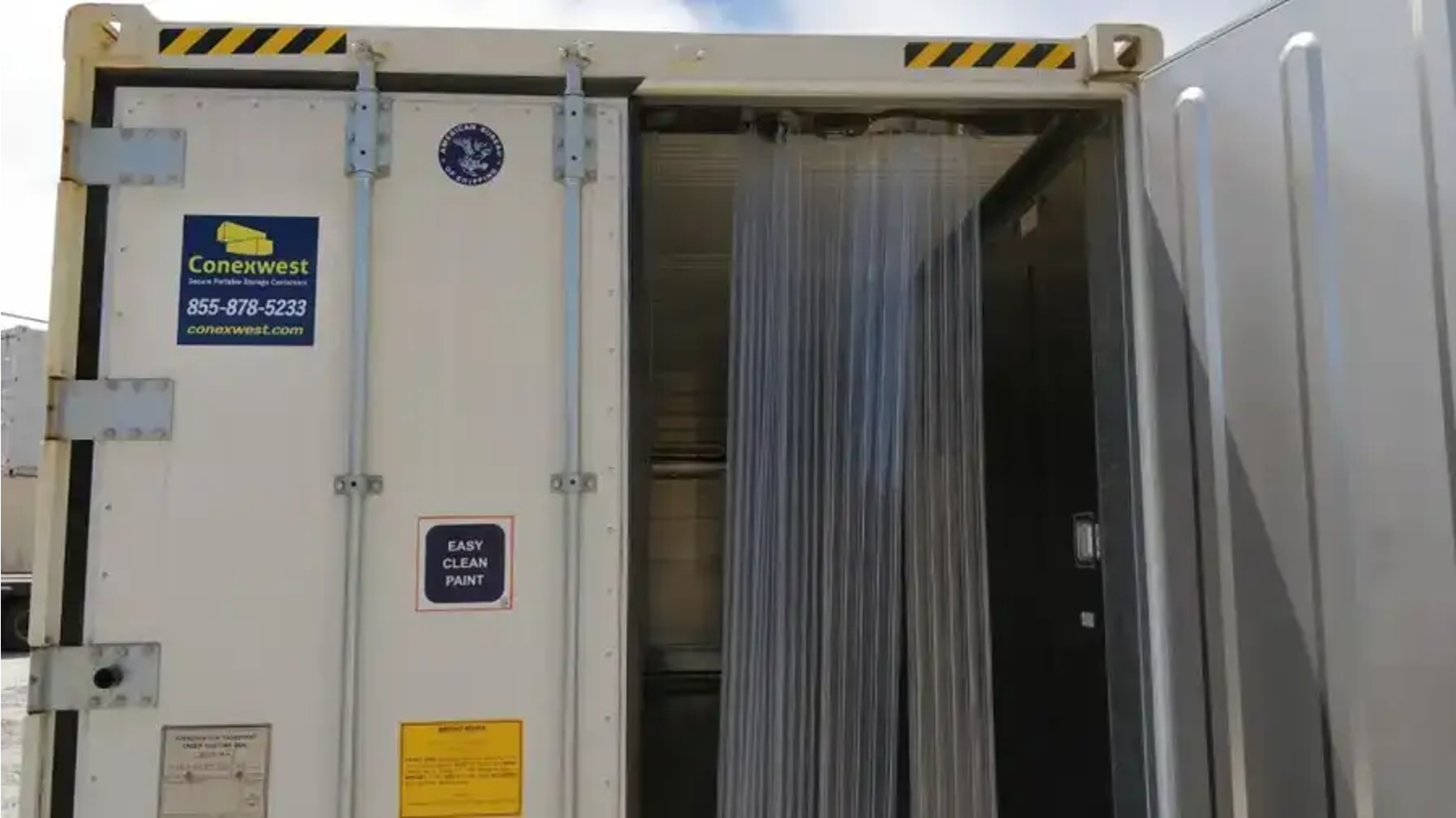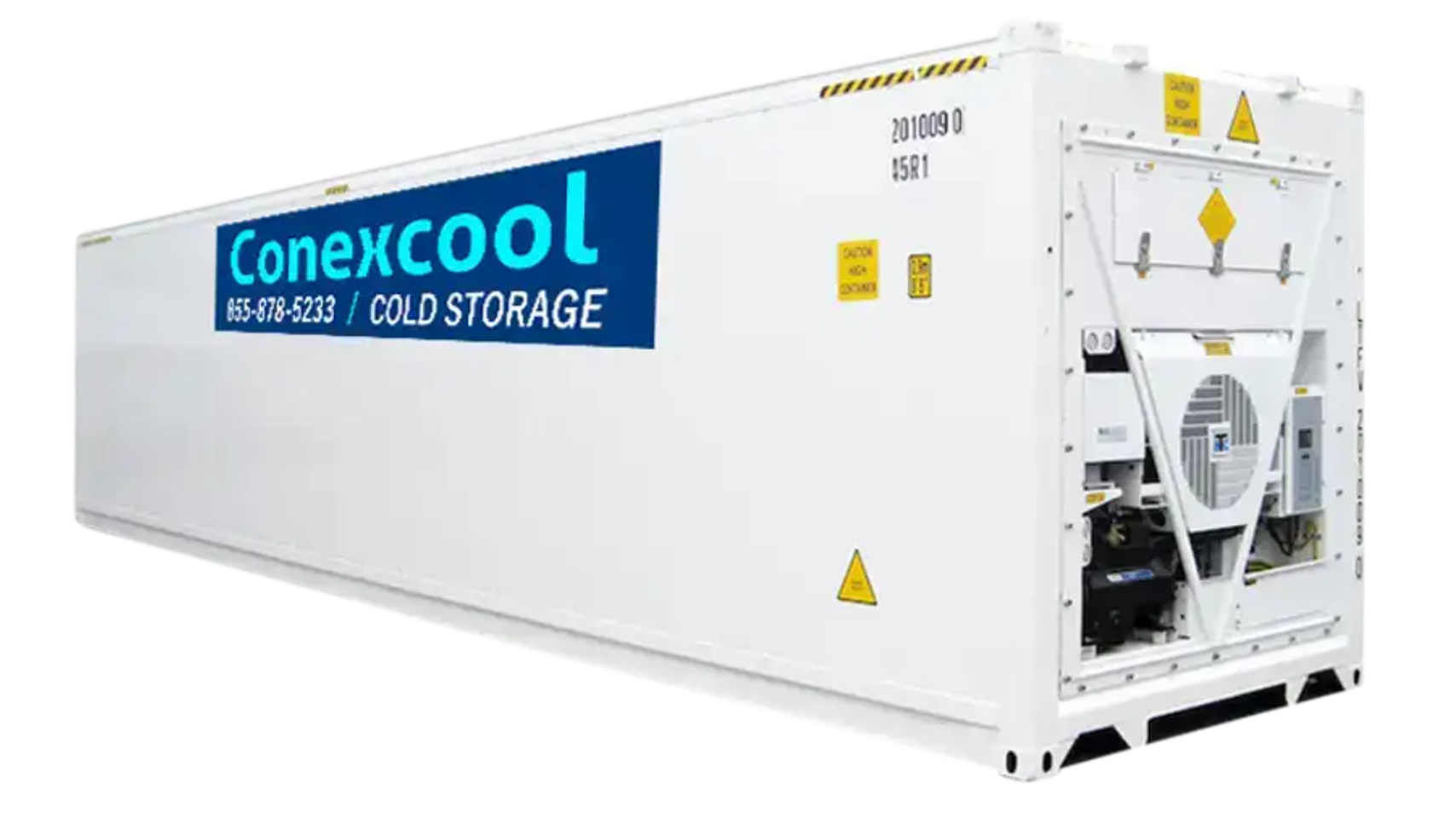What Is A Reefer Container Temperature Range?
Get a quoteReefer Container Temperature Range Explained
Key Takeaways
- Regular reefer containers maintain temperatures from -35°C to +15°C.
- Use monitoring devices to track temperature and humidity in real time.
- To maximize your reefer performance, make sure you maintain it regularly and use pre-cooling techniques.
- At Conexwest, we offer 20ft and 40ft reefer containers for sale or rent.
Standard Temperature Ranges In Reefers
- Standard Range: Most reefer containers can be set between -35°C and +15°C (-31°F and 59°F) for different types of cargo.
- Specialized Units: Some of the high-capacity units, such as super freezers, can maintain temperatures as low as -60°C (-76°F), or even -70 °C (-94 °F) for ultra-cold storage requirements.
Conexwest, a leader in shipping and storage solutions based in Northern California, offers new, used, and refurbished containers from 10ft to 45ft, with fast delivery within 3–7 days and container fabrication options like adding shelves and locks. We serve over 10,000 customers nationwide, including prestigious clients like the U.S. Navy and Google. As an ISO 9001 and AWS-certified company, we ensure top quality and competitive pricing. |
Temperature Requirements In Reefers By Cargo Type
Fruits and Vegetables
Common Fruits:
- Strawberries: Approx. 0°C (32°F)
- Bananas: 55°F to 59°F (13°C to 15°C) for ripening
Vegetables:
- Broccoli: 0°C (32°F)
- Carrots: -1°C to 0°C (30°F to 32°F)
Dairy Products
- Butter (Frozen): −25°C to −20°C (−13°F to −4°F)
- Cheese (Fresh): 0°C to +4°C (+32°F to +39°F)
- Milk & Dairy Products: 0°C to +1°C (+32°F to +34 °F)
Meat and Poultry
- Chilled Meat: -2°C to 0°C (+28°F to +32°F)
- Frozen Meat: -25°C to -20°C (−13°F to −4°F)
- Poultry (Frozen): −25°C to −20°C (−13°F to −4°F)
Seafood
- Chilled Fish: -1°C to 0°C (+30°F to +32°F)
- Frozen Fish: -25°C to -20°C (-13°F to -4°F)
Other Products
- Chocolate: 10°C to 18°C (50°F to 65°F)
- Eggs: −2°C to +1°C (+28°F to +34°F)
- Juices and Concentrates: −25°C to −20°C (−13°F to −4°F)
Read More: 20ft Reefer Container Dimensions & Specifications
7 Best Practices For Using Reefer Containers

Reefers can be powered by a standard power source or with a generator.
1. Pre-Cooling Procedures
- Pre-Cool Your Cargo: Cool your cargo to the proper temperature prior to loading to eliminate thermal shock and keep everything stable during the trip.
- Pre-Cool the Reefer: Before the cargo is loaded, set the reefer to the target temperature of the cargo to prevent surface thawing or freezer burn.
2. Proper Loading Techniques
- Airflow Management: Load cargo in a manner that allows proper air circulation. Don’t cram things too tightly or stack them too high - it can restrict airflow and make for uneven cooling.
- Cold Tunnels: Whenever possible, load in cold tunnel facilities to keep warm air from entering and preserve the ground temperature of the reefer during loading.
3. Humidity and Temperature Settings
- Set the Proper Temperature: Depending on what you’re shipping, adjust the reefer temperature and humidity settings. For example, meats, fruits, and pharmaceuticals all require different conditions.
- Monitor Closely: Deploy temperature monitors and data loggers to help you track conditions. That way, you’ll notice any changes in temperature quickly.
4. Routine Maintenance and Check-ups
- Pre-Trip Inspection: Always inspect your reefer before each trip. There should be no visible damage, seals should be intact and checked, the cooling system should be functional, and the interior should be cleaned to avoid contamination.
- Regular Maintenance: Clean the cooling system periodically, inspect gaskets, and calibrate the sensors to keep the reefer reliable.
5. Handling During Transit
- Maintain Power: Reduce the number of power interruptions while loading, unloading, or moving. Power up that reefer as soon as it’s loaded and leave it on until the trip is over.
- Gensets for Land Transport: For the inland route, portable generators can keep the reefer running even in places where the electricity supply is intermittent.
6. Packaging Considerations
- Use Durable Packaging: Use strong, moisture-resistant packaging to protect the cargo from both, temperature fluctuations and impact, to mitigate spoilage risks.
- Do Not Overload: Stick to the container’s load line - overloading blocks airflow and can lead to uneven cooling, which could harm your cargo.
7. Documentation and Compliance
- Get Insurance: Refrigerated transport is riskier, so make sure your insurance covers losses from spoilage or temperature shifts.
- Stay Up To Date: Follow shipping regulations for temperature-sensitive items. This includes documentation, labeling, and handling specifications to prevent holdups and ensure seamless clearance at customs.
Read More: 40ft Reefer Container Dimensions & Specifications
Why Choose Conexwest For Reefers

We provide new, used, and refurbished containers in sizes from 10 to 45 feets.
At Conexwest, we understand that your cargo is important, and we are dedicated to providing you with the best reefers to keep your products safe and fresh during transport. Here’s why you should choose us:
1. Quality You Can Trust
Quality is our top priority - all containers that we supply are thoroughly inspected and maintained to our high standards. You can trust our reefers for the optimum condition of perishable goods.
2. Expertise and Support
Our team of experts is here to guide you and support you throughout your journey! We have a customer-centric approach - when in doubt about anything container, don’t hesitate to reach out to us.
3. Proven Experience
Having served various industries, including pharmaceuticals and food distribution, we have the expertise to meet your needs.
Frequently Asked Questions (FAQs)
- How does a reefer container work?
Reefer containers are shipping containers that have a built-in refrigeration unit to circulate chilled air inside and keep the contents cool. It can operate on auxiliary power or a generator.
- What can you carry in reefer containers?
They are ideal for transporting perishable goods such as:
- Fruits and vegetables
- Meat and poultry
- Dairy products
- Seafood
- Pharmaceuticals
- Is it allowed to cargo load above the red line?
Nope - loading above the red line will obstruct airflow and potentially create imbalances in cooling. Exceed that amount and your goods may spoil or rot. So it’s better to stay beneath that threshold.
- What happens if the temperature fluctuates while in transport?
If you see temperature fluctuations, check the refrigeration unit to see if it’s correctly set and functioning. Monitoring devices can help you track temperature and humidity in real time, so you can quickly make adjustments if necessary.
- What are the sizes of the reefer containers you have?
We’ve got two sizes: 20ft containers and 40ft containers.
